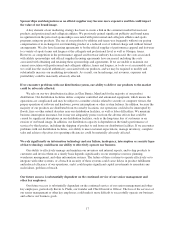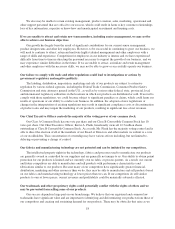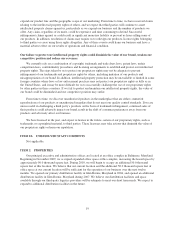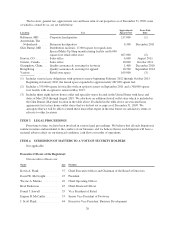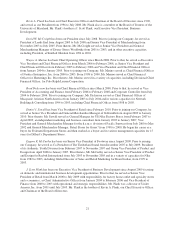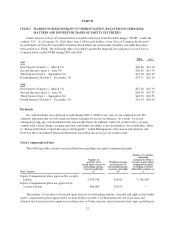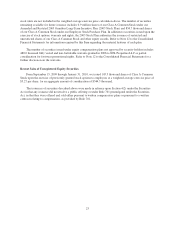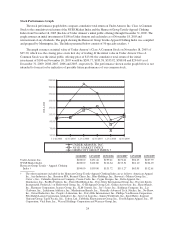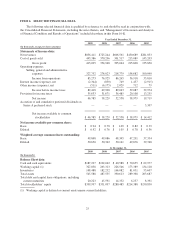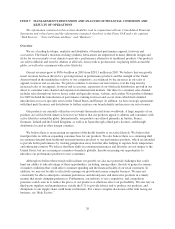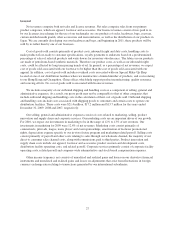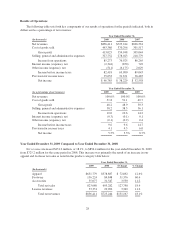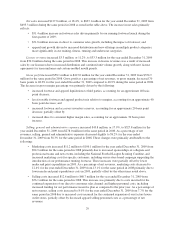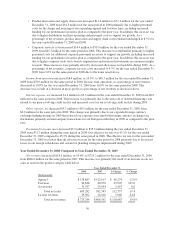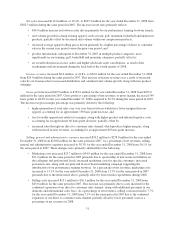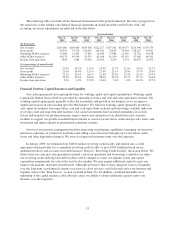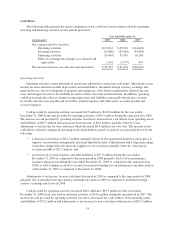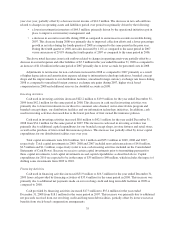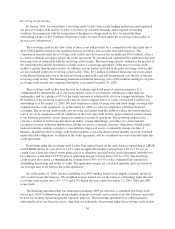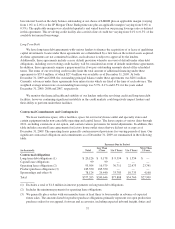Under Armour 2009 Annual Report Download - page 35
Download and view the complete annual report
Please find page 35 of the 2009 Under Armour annual report below. You can navigate through the pages in the report by either clicking on the pages listed below, or by using the keyword search tool below to find specific information within the annual report.General
Net revenues comprise both net sales and license revenues. Net sales comprise sales from our primary
product categories, which are apparel, footwear and accessories. Our license revenues consist of fees paid to us
by our licensees in exchange for the use of our trademarks on core products of socks, headwear, bags, eyewear,
custom-molded mouth guards, other accessories and team uniforms, as well as the distribution of our products in
Japan. We are currently developing our own headwear and bags, and beginning in 2011, these products will be
sold by us rather than by one of our licensees.
Cost of goods sold consists primarily of product costs, inbound freight and duty costs, handling costs to
make products floor-ready to customer specifications, royalty payments to endorsers based on a predetermined
percentage of sales of selected products and write downs for inventory obsolescence. The fabrics in our products
are made of petroleum-based synthetic materials. Therefore our product costs, as well as our inbound freight
costs, could be affected by long term pricing trends of oil. In general, as a percentage of net revenues, we expect
cost of goods sold associated with our footwear to be higher than the cost of goods sold associated with our
apparel. In addition, cost of goods sold includes overhead costs associated with our Special Make-Up Shop
located at one of our distribution facilities where we manufacture a limited number of products, and costs relating
to our Hong Kong and Guangzhou, China offices which help support product manufacturing, quality assurance
and sourcing efforts. No cost of goods sold is associated with license revenues.
We include a majority of our outbound shipping and handling costs as a component of selling, general and
administrative expenses. As a result, our gross profit may not be comparable to that of other companies that
include outbound shipping and handling costs in the calculation of their cost of goods sold. Outbound shipping
and handling costs include costs associated with shipping goods to customers and certain costs to operate our
distribution facilities. These costs were $21.4 million, $17.2 million and $13.7 million for the years ended
December 31, 2009, 2008 and 2007, respectively.
Our selling, general and administrative expenses consist of costs related to marketing, selling, product
innovation and supply chain and corporate services. Our marketing costs are an important driver of our growth.
For 2010, we expect our investments in marketing to be in the range of 12% to 13% of net revenues. Our
investments in marketing for 2009 were 12.4% of net revenues. Marketing costs consist primarily of
commercials, print ads, league, team, player and event sponsorships, amortization of footwear promotional
rights, depreciation expense specific to our in-store fixture program and marketing related payroll. Selling costs
consist primarily of payroll and other costs relating to sales through our wholesale channel, the majority of our
direct to consumer sales channel costs, along with commissions paid to third parties. Product innovation and
supply chain costs include our apparel, footwear and accessories product creation and development costs,
distribution facility operating costs, and related payroll. Corporate services primarily consist of corporate facility
operating costs, related payroll and company-wide administrative and stock-based compensation expenses.
Other income (expense), net consists of unrealized and realized gains and losses on our derivative financial
instruments and unrealized and realized gains and losses on adjustments that arise from fluctuations in foreign
currency exchange rates relating to transactions generated by our international subsidiaries.
27


